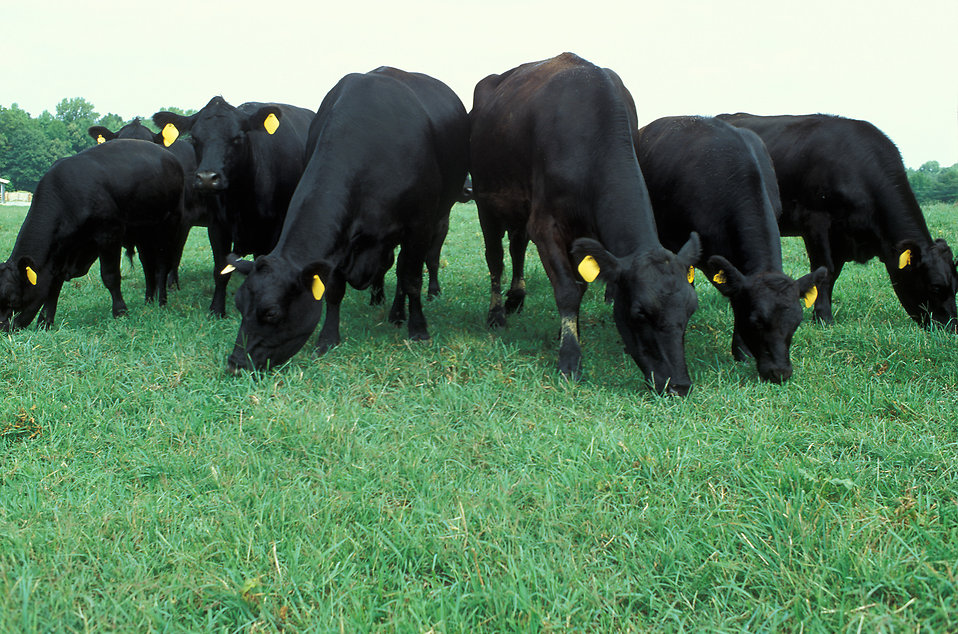In the Piedmont and northern Georgia, UGA Extension recommends planting tall fescue between September 1 and October 15. So, why discuss planting in March? In areas where tall fescue is adapted, conversion of toxic Kentucky-31 pastures and hayfields to a non-toxic, novel endophyte variety represents one of the most financially beneficial decisions available to livestock producers. Research, over many years and locations, has documented that consumption of tall fescue forage containing toxic compounds reduces both reproduction and growth. For cattle producers that means a reduced calving rate and lighter calves. “Fescue cattle” are likely to be discounted when marketed, further reducing the revenue from fewer pounds available for sale.

Contemplating the removal of an existing stand that has been productive and persistent is not trivial. When the conversion is being considered, experts suggest the first step should be confirming that toxins are indeed a problem. Stands of tall fescue that have persisted for any length of time have a very high probability of being infected with the toxin-producing fungal endophyte. However, being certain of the toxicity level is a relatively low-cost investment to be certain before a costlier investment in seed and temporary loss of forage is pursued.
There are no visual clues that indicate a tall fescue plant is producing compounds toxic to livestock. A laboratory test must be used. Reliable assay results depend on careful and representative sampling. In Georgia, the Agrinostics, Ltd. lab, operated by retired UGA professor, Dr. Nick Hill, is a dependable source of instruction about sampling procedures as well as analytical results. University labs in Kentucky and Missouri also analyze samples for the presence of tall fescue toxins, ergot alkaloids.
If a detrimental level of toxin production is established a single term may summarize the requirement for “prior planning:” SEEDS. Plans must account for both old seeds and new seeds.
Research has demonstrated that two applications of herbicide are the most effective means to removing an existing stand of toxic tall fescue. Proper glyphosate application will effectively eliminate tall fescue vegetation. It will not prevent the establishment of toxic plants from “carry over” seed. Preventing the production of seed from the existing stand is essential to establishing a new stand of uniformly non-toxic plants.
Production of toxic seed can be managed by clipping seed heads before they mature viable seed or use of a growth-regulating herbicide, Chaparral, which if properly applied, will prevent seedhead development. Because seed head development is extensive, more than one clipping is likely to be necessary to eliminate the production of viable toxic seeds. A plan which deals with “old” seed is critical to successful conversion.
Planning for “new” seed requires selection of an adapted variety and ensuring proper handling before planting. Several excellent novel endophyte varieties are currently available. It’s important to distinguish novel endophyte from endophyte-free varieties. The same compounds produced by the seed-borne fungus which are toxic to livestock are responsible for the success of tall fescue when environmental conditions are hostile. Endophyte-infected Kentucky-31 is persistent because of tolerance to insect and disease pests as well as drought. Research has clearly shown that removing the endophyte leads to a plant that will not persist and provide a dependable source of forage. Discovery of endophytes which produced an array of compounds which conferred persistence without livestock toxicity led to the development of varieties which are classified as “novel endophyte.”
Infection is usually considered undesirable. In the case of tall fescue, ensuring the infection of seed with the novel endophyte is essential for stand persistence. A collaboration of university and public organizations with several seed companies has established The Alliance for Grassland Renewal. In addition to educational and promotional efforts, the Alliance supervises quality control aspects of novel endophyte tall fescue seed. Seed companies have voluntarily agreed to submit seed samples for testing. Seed packages displaying the Alliance label ensure that the seed is infected with a viable, non-toxic novel endophyte.
Selection of one or more novel endophyte varieties should be made in time to ensure seed availability from a supplier of choice. Also, the plan should include the provision of alternatives if dry conditions in late summer suggest that fall planting is unwarranted. Suppliers and seed companies may offer to accept returned seed for credit if planting is prevented. Those arrangements should be made at the time of purchase with clear information about required conditions.
A final seed decision depends on the procedure selected to accomplish the conversion. Two approaches have proven to be effective in eliminating existing stands and encouraging the establishment from novel endophyte seed. Described as “spray-smother-spray,” one procedure requires the establishment of a summer annual forage crop following a late spring glyphosate application. This procedure has the advantage of producing a desirable summer forage that complements the cool-season production of tall fescue. Selection of seed for a summer annual, such as pearl millet or sorghum-sudangrass, should also be made sooner rather than later.
The alternative approach to conversion is termed “spray-wait-spray.” A late summer glyphosate application reduces the exiting toxic tall fescue stand and a second application at planting time ensures the elimination of any escapes from the initial application. This approach depends on summer production from the existing toxic stand but has the advantage of delaying a planting decision. If late summer conditions indicate moisture status is unlikely to support good establishment from a fall planting, it may be wise to delay conversion for a year.
Timely decisions are always important in forage and livestock production. More decisions associated with actual planting procedures will be discussed in a Part II segment.